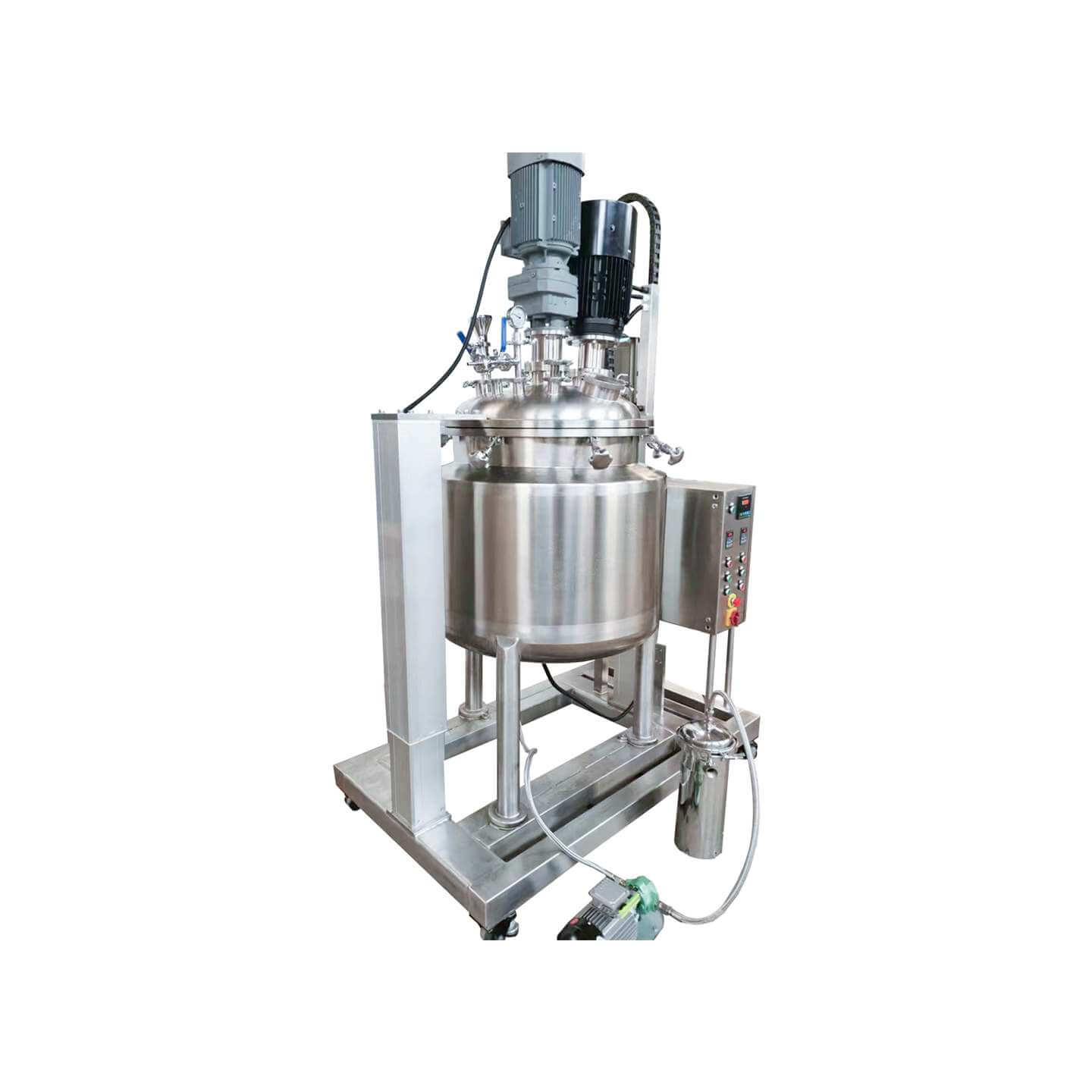

Laboratory Reactor
Laboratory reactor: used in the chemical industry, pesticide, paint, and other fields
Material
glass, stainless steel (316, 304), carbon steel, others
Capacity (L)
10-10000+
Mixing system
anchor, paddle, frame and others
Heating system
electric heating, oil heating and others
The laboratory reactor is small in size, beautiful in appearance, light, and fast in installation. It is composed of a pot body, pot cover, stirrer, jacket, support and transmission device, shaft sealing device, etc. The type of stirring device, rotation speed, sealing structure, heating method, etc. are produced.
Request a quoteDetermine the volume: The nominal volume of the laboratory reactor manufacturer refers to the total volume of the straight section of the cylinder and the lower elliptical head (Note: the volume of the upper elliptical head is not included). The loading coefficient of the laboratory reactor is usually 0.6 to 0.8. If it is necessary to hold 40L of materials, the coefficient is taken as the median value of 0.7, and the nominal volume of the laboratory reactor needs to be 60L. Therefore, you need to explain this requirement to the laboratory reactor manufacturer when purchasing.
Medium characteristics requirements: When the materials you produce have acid and alkali corrosion requirements, you need to consider high-quality stainless steel or tetrafluoro-lined treatment, and all the outer surfaces of the laboratory reactor need to be treated with acid and alkali resistance to prevent the process of testing operations. Drop the medium on the outer surface; if there is no acid and alkali corrosion, it can be made of carbon steel material.
Operating temperature: Operating temperature is a very important performance parameter, not only related to the heating method but also closely related to the sealing material.
Whether the instruments and meters are complete: a perfect laboratory reactor should be equipped with two pressure gauges, thermometers, safety valves, etc. of the same specification; in addition, there should be two sight glasses, various operating valves, a speed regulation system, etc. Every instrument and meter is a necessary part for safe production and high-quality production.
Installation space: Some users place the laboratory reactor on the counter for the convenience of management or operation, and there is a limit to the storage space at this time. For example, a customer needs to order a 10L laboratory reactor, and the height of the whole equipment should not exceed 1.35 meters. After the efforts of the company’s technical engineering department, this batch of 10 pieces of equipment has been completed with good quality and quantity.
Tip: Once the laboratory reactor is completed, try not to rectify it, please try to put forward your requirements when ordering, to design and produce more satisfactory products for you!

Precautions for the operation of laboratory reactors
1. Safety first, whether it is a laboratory reactor or a production reactor, it must be operated within the specified pressure range.
2. The loading factor of the laboratory reactor is 70-80% of the full volume, and overload operation is strictly prohibited.
3. If the material of the kettle body is austenitic stainless steel, the chloride ion content of the material must be strictly controlled to be ≤25ppm.
4. The physical and chemical properties of the test materials should be consistent with the manufacturing materials of the laboratory reactor, and the materials are particularly required to be non-corrosive to the materials.
5. If you accidentally find that the equipment has abnormal noise during operation, you should stop it immediately for inspection and discharge foreign objects.
6. It is strictly forbidden to disassemble the parts during the operation, especially when working under pressure, the pressure should be slowly reduced until the pressure in the kettle is eliminated, and then disassembled.
7. The laboratory reactors are equipped with two pressure gauges with the same specifications and ranges. When the two gauges display different pressures or one of them does not work, it must be replaced.
8. The heating temperature of the material in the kettle should not exceed the upper limit of the operating temperature, so as not to damage the thermometer and sealing device.
9. The speed of the laboratory reactor is divided into two types: fixed and adjustable. When it is adjustable, it cannot exceed the specified maximum speed.
10. Rotate according to the direction of the cutting head diagram clearly shown in the head part, and remember to start the motor in the reverse direction.
11. After the experiment is completed, the power switch of the laboratory reactor should be cut off and put in a safe protection state.
12. Thorough cleaning should be carried out after each test to avoid affecting subsequent experiments.
13. Always pay attention to keeping the outer surface of the laboratory reactor clean and dry, to facilitate the observation of the surface of the kettle body.




